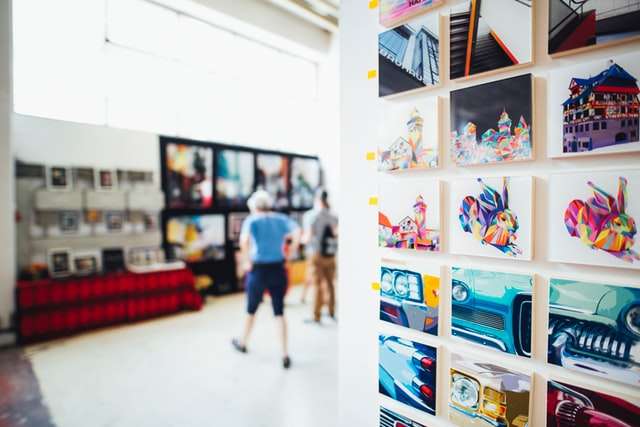What is Art? Is it just paintings and sculptures that hang in museums? What about graffiti art?
This blog discusses street art, both the good and bad. It also attempts to answer the question “what is art?”
Street art is getting more popular every day. It’s actually gaining a lot of popularity in Europe and Asia. Many people are actually growing to like it more than traditional art in museums.
This blog will discuss the benefits of street art and how its popularity as grown over time. You’ll also learn about the differences between street art and graffiti.
Ever since the advent of the caveman drawing on cave walls, artwork has been a part of human existence. The development of artistic creations has progressed over time to include different media, such as painting and sculpture. Artwork is not just something that was created for the upper class or even just art dealers. Street art is artwork, too.
Street art can be defined as any form of visual art that is displayed in an outdoor public space. This form of art exists all around us in many different forms and may be surprising to come across because it is usually tucked away in a dark alley or street corner. It has always been a part of the urban landscape and is gaining popularity as time goes on.
Street art can be described as a form of graffiti which incorporates elements from fine arts into it. However, there are many other forms of street art that do not involve graffiti on any sort of property at all. There are painted signs that are placed illegally in places where there are no signs to advertise businesses or events taking place. Even if they are removed by authorities, they still remain imprinted onto our minds and hearts because they were there one day but gone the next.
There are also murals painted on walls which depict important aspects of our history or culture today such
Street art is a term used to describe art created in public locations, primarily in urban areas. The term implies the unplanned nature of the work; it is created spontaneously without permission, and without any intention of it being viewed by the general public.
The term is commonly associated with graffiti, but can also include sticker art, stencil art, wheatpasting and street installation art. Street artists often target surfaces like billboards, train cars and traffic signs for their work because these areas are generally viewed by large numbers of people.
Street art does not require approval by property owners or local government because it is located in public spaces; this distinguishes it from graffiti which tends to be more ephemeral and located on property owned by someone else.
Street art can be political or non-political, although most artists tout its apolitical nature. Some of the best known street artists have created entire bodies of work that make social or political commentary, for example Banksy’s work ranges from political commentary to anti-war themes.
Street art is viewed by many as a rebellious act, but others do not see it that way. They view it as an expression of the individual, promoting freedom of speech and creativity. Street art is also viewed as an effective means of communication to the public. It allows those who view it to use their imagination which can lead to them developing new ideas and concepts. For example, Banksy’s “Balloon Girl” piece was meant to be a commentary on society’s over-commercialization of children and how they are influenced by advertising (1). She was placed in a place where children would see it and think about what she could be thinking and feeling while she is standing there with her eyes covered.
Street art can be used to provoke thought or just for artistic expression and entertainment. In addition in some areas street art is an effective way to communicate a message to the public without spending any money on signs or billboards, which can be very costly (2). And because it is done in locations that people frequent for one reason or another, more people will see the message than if it was only communicated through traditional media such as television or newspapers.
Some people are against street art because they believe that it gives the wrong impression about a neighborhood or town, but others feel differently
“In the United States, there’s a strong argument for the freedom of expression. It is considered a constitutional right. The same can’t be said for other nations such as France and England, where graffiti is illegal and quick to be removed.”
However, we are not free from graffiti ourselves. Take the New York subway system for instance. There is an ongoing debate between people who believe street art has a lot of artistic merit and people who believe it is merely vandalism that should be taken down. The problem with removing it is that if you take it down, then you are diminishing someone else’s idea and expression.”
In the 5th century B.C., Romans began to use wall space for art and decoration, such as friezes and frescoes. Some of the earliest public artworks were mosaics featuring geometric patterns and images of animals.
A major influence on Roman culture was the Ancient Greeks, whose city-states had a powerful influence on Roman architecture and art. In the 1st century B.C., Greek artists fleeing from political strife in their homeland brought their special styles to Rome.
The Romans imitated Greek art forms, but they also made innovations in their own works that set them apart from classic Greek style. The Romans were heavily influenced by their Etruscan neighbors, who used vibrant colors in the murals they created for burial sites. Many Etruscan tomb paintings that have been discovered depict everyday scenes of ordinary citizens at work or at play. The Romans borrowed some of these trends for their own artworks, often depicting everyday life with a distinct sense of realism not found in other ancient cultures’ artwork.*
Tone:informative**
Art is a term that refers to any skill or aesthetic practice which seeks to produce objects, structures, or spaces which are considered to be more than utilitarian. Art is important to society in that it can be used to convey messages and/or serve as an artifact created by a civilization.
The roots of art can be traced back as far as 35,000 BC. The oldest known cave paintings are located in the El Castillo Cave in Spain. These paintings were created at least 10,000 years ago by Neanderthals and are still preserved today. The purpose behind the creation of these images is unknown, but they give us a window into what our ancestors may have been thinking about.
Art has been present in many civilizations throughout the ages, but it wasn’t until the Renaissance period (14 th century) that art began to flourish and gain importance in society.
Art comes in many forms and can be expressed through any form of medium, such as painting (visual arts), sculpture (visual arts), literature, poetry, theatre, film, dance and music. These forms can be further divided into categories such as; watercolour painting or oil painting.
Modern day art is often displayed in museums for public viewing and has become an important part of our society today.”



